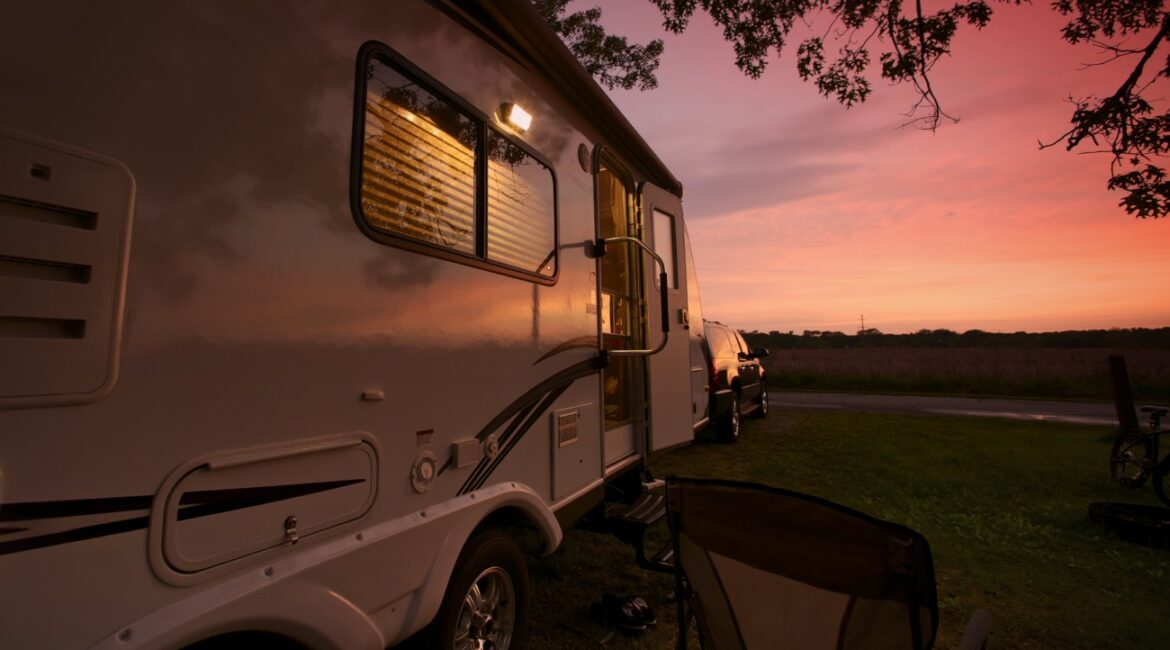Have you ever wondered about the height of RVs and how it might impact your travels? Whether you’re an experienced RVer or new to the world of recreational vehicles, understanding the typical height of RVs is crucial. In this quick size guide, we’ll provide you with essential information about RV heights and address some common questions to ensure your RV adventures go smoothly.
RV Height Ranges
RVs come in various shapes and sizes, and their heights can vary significantly. On average, most RVs fall into the range of 11 to 13.5 feet (3.3 to 4.1 meters) in height. However, it’s essential to note that this range can change depending on the type of RV and its specific design. Smaller RVs, such as pop-up campers or teardrop trailers, tend to be on the lower end of this height range, while larger Class A motorhomes and fifth-wheel trailers can reach the taller end of the spectrum. Before hitting the road, it’s crucial to measure the height of your RV accurately, including any rooftop accessories like air conditioning units or satellite dishes, to avoid clearance issues when passing under bridges or through tunnels.
Height Considerations
Knowing the height of your RV is vital to avoid unwanted surprises during your travels. One of the primary concerns is clearance, especially when driving under low bridges or entering tunnels. Make sure to plan your route in advance, considering the height restrictions of your RV. Additionally, when choosing campsites or RV parks, inquire about any overhead obstacles or low-hanging branches that could pose a problem for taller RVs. Being aware of your RV’s height and planning accordingly will help you navigate with ease and peace of mind.
FAQ : How Do I Measure the Height of My RV?
What’s the best way to measure the height of my RV?
To measure the height of your RV accurately, follow these steps:
- Park your RV on level ground.
- Extend any slide-outs or awnings to their normal positions.
- Using a straight, vertical object (like a level or yardstick), place one end on a flat surface, such as the roof.
- Ensure the object is perfectly vertical and level.
- Measure the distance from the ground to the point where the object touches the highest part of your RV.
- This measurement is your RV’s height.
Are there any tools or devices that can help me measure the height more easily?
Yes, there are specialized tools like RV height measuring sticks available in the market. These sticks are designed to make it simpler to measure your RV’s height accurately. They typically consist of telescoping sections that you can extend until they touch the highest point of your RV. Using a height measuring stick can save time and ensure precision.
What if my RV has adjustable features like air conditioning units or antennas? How should I measure the height in that case?
If your RV has adjustable features like retractable antennas or air conditioning units, measure the height both in the lowered and raised positions. This will give you a range of heights to consider when planning your routes and choosing campsites, ensuring you have the flexibility to adapt to different situations.
Should I be concerned about my RV’s height when driving on highways?
Yes, highway overpasses, bridges, and tunnels can have height restrictions. Always check road signs and be aware of posted clearance heights. If the clearance is lower than your RV’s height, find an alternative route or detour that accommodates your vehicle safely.
What’s the consequence of not knowing my RV’s height when approaching a low-clearance area?
Failing to account for your RV’s height when approaching a low-clearance area can result in significant damage to your vehicle and potentially pose safety hazards. Collisions with bridges or overpasses can lead to costly repairs, delays, and safety risks. It’s essential to know your RV’s height and plan your routes accordingly to avoid such situations.
Can I rely on GPS systems to warn me about low-clearance areas?
While some GPS systems offer features that alert you about potential low-clearance areas, it’s not foolproof. These warnings may not always be up to date or accurate. It’s best to complement GPS information with your measurements and route planning to ensure a safe journey.
Are there apps or websites that provide information on low-clearance areas for RVers?
Yes, there are apps and websites designed specifically for RVers that offer information on low-clearance areas, bridge heights, and other road-related details. These resources can be valuable tools to enhance your travel planning and safety.
RV Height and Campground Selection
Choosing RV-Friendly Campgrounds: When you’re on the road with an RV, one of the critical considerations is finding campgrounds that can accommodate your vehicle’s height comfortably. Not all campgrounds are created equal, and some may have restrictions on the maximum height of RVs they can accommodate. Research RV-friendly campgrounds and parks that are designed to cater to taller vehicles. These campgrounds typically offer larger sites with higher clearances, making your stay more enjoyable and hassle-free. By planning your stops at RV-friendly campgrounds, you can avoid the stress of arriving at a location only to discover it’s not suitable for your RV’s height.
RV Height and Boondocking
Boondocking and Height Awareness: Boondocking, or dry camping, is a popular choice for many RV enthusiasts who prefer off-the-grid adventures. When boondocking, you’re often in more remote and natural settings, which can be an incredible experience. However, it’s essential to be extra cautious about your RV’s height when boondocking. Natural environments can feature low-hanging branches or overhanging rock formations that could pose a risk to taller RVs. When scouting for boondocking spots, always assess the surroundings for potential height-related hazards. It’s also wise to have a backup plan in case you encounter unexpected obstacles, ensuring a safe and enjoyable boondocking experience.
Safety Precautions for RV Height
Height-Related Safety Tips: Ensuring your safety on the road with an RV involves more than just knowing your vehicle’s height; it also requires practicing safe driving habits. Be mindful of speed limits, especially when approaching bridges and tunnels with height restrictions. Reduce your speed well in advance to allow for safe braking if necessary. Always follow posted clearance height signs and road warnings, and avoid last-minute lane changes or turns when you’re unsure about clearance. Additionally, consider installing a height warning system on your RV. These systems use sensors to alert you if your RV is about to encounter a low-clearance obstacle, adding an extra layer of safety to your travels.
- Transform Your Health with Medford Medical Weight Loss Program - June 9, 2025
- A Chat with Nate and Mika, Christian Wedding Photographers - July 18, 2024
- Ultimate Guide To Playing Online Casinos - May 27, 2024









